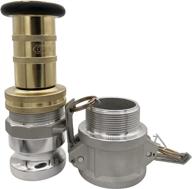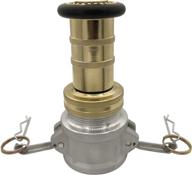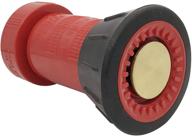
Review on 🔧 Hourleey Brass Valve Quarter: High-Quality Pieces for Exceptional Performance by Jason Robinson

Good value for money and they really work!
I needed several ball valves to isolate plumbing in my house when replacing and repairing pipes and fittings. The most important thing was the safe and reliable shutdown. They weren't purchased as a permanent solution or part of a finished system, but the quality is good enough that I could reuse and buy more for a finished project. I have 3/4" and 1/2" pipes that are being replaced due to age and obsolescence. It appears to be a well-made full-bore valve, so it shouldn't create any additional restrictions on the finished system. I have no idea where they were made, haven't looked at them and don't care too much, but looking at them and using them I can say they are of high quality and decent enough for what I do need need. The diameter of the spikes appears to be slightly smaller than some others, but is well within the normal range. I don't normally use stainless steel tulip clamps and prefer copper stretch rings for PEX B. I just have fewer problems with copper rings. The last thing I want is a leak. The spikes seem adequate and properly spaced, so I'm sure the joints will be strong enough to last for decades provided I do my part and make good connections from the start. I checked a few test fittings for leaks under hydraulic pressure and they held up pretty well. More than enough for domestic water supply. No sign of leakage at valves or connections. Of course I don't experience any flow pressure, just high enough than normal system pressure to ensure adequate localization and function. The valves functioned smoothly under pressure and were well sealed, opened and closed. If I were working on an industrial, commercial or institutional build I would probably use higher quality materials. They should be fine for a home use like mine and 95% of the others. I usually use two types of PEX connections. Crush/Compression copper rings for PEX B or extension types like ProPex/Uponer for PEX A. PEX A and ProPex connections are a bit quicker and easier in most cases if you have power tools, but these tools require additional expense that is not possible are worthwhile for a homeowner. The same applies to power tools for copper rings PEX B. Copper expansion rings are still economical, but a little more difficult to make in hard-to-reach places with hand tools. Power tool options can get expensive anyway and are sometimes too bulky for limited space. Hand tools can be great for any type of connection, but they can become tedious when you're making a lot of connections. I have little doubt these valves will work until I complete the final design and reinstall it. If so, then money well spent. Much cheaper than big box stores and probably about as durable as branded ones. Unfortunately, we tend to learn things the hard way. I have learned to do plumbing and electrical work as needed. I've checked the regulations and requirements to be sure as things may have changed in the three or four decades since plumbing was first installed. It took me about 20 years to "trust" PEX, especially after replacing a ton of old polybutylene. This stuff was and still is a nightmare. I used to prefer copper, then CPVC, now PEX. So far none of my PEX installations have leaked. I will not be slacking at this stage of the game. Good materials and proper installation seem to make a big difference. Once I've decided what type of PEX and connection I'm going to use, I buy them in bulk along with fresh pipe and fittings. I probably have enough leftovers to do this twice, but PEX can go bad if not stored carefully. Some people are concerned about how far these handles swing and whether they get in the way when placed next to each other. If they have to rock sideways that could be a problem and you will have to move the valves to have play. I just set them up so the arms are swinging outward and away from the surface, not sideways. To install them, simply turn the valve 90 degrees. Haven't had any problems with it so far. Doesn't seem like a code violation and has been smell checked by multiple inspectors and real plumbing friends. This works well when using a manifold distribution. The other half is more difficult as it requires work. I don't like making something more than once, so attention to detail like decent materials and components makes all the difference. Careful assembly and inspection is essential. There are no shortcuts that won't end up biting your ass.
- GOLS certified
- Only available in black
New products
Comments (0)
Top products in 🔧 Fittings
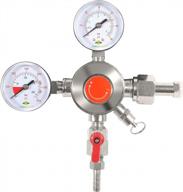
Upgrade Your Draft Beer Kegerator With The TerraBloom CO2 Keg Pressure Regulator - Dual Gauge Heavy Duty Unit With Safety Features

16 Review
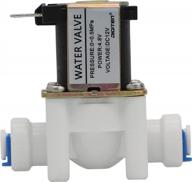
DIGITEN DC 12V 1/4" Inlet Feed Water Solenoid Valve Quick Connect N/C Normally Closed No Water Pressure

14 Review

6 Pack Miahart Adjustable 304 Stainless Steel 4 Inch Hose Clamp Duct 91Mm-114Mm Worm Gear Pipe Clamp For Automotive, Mechanical Agriculture.

18 Review
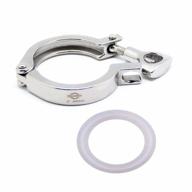
High-Quality QiiMii Stainless Steel Sanitary Clamp With Silicone Gasket - 2 Inch, Single Pin Tri Clover Design

16 Review


